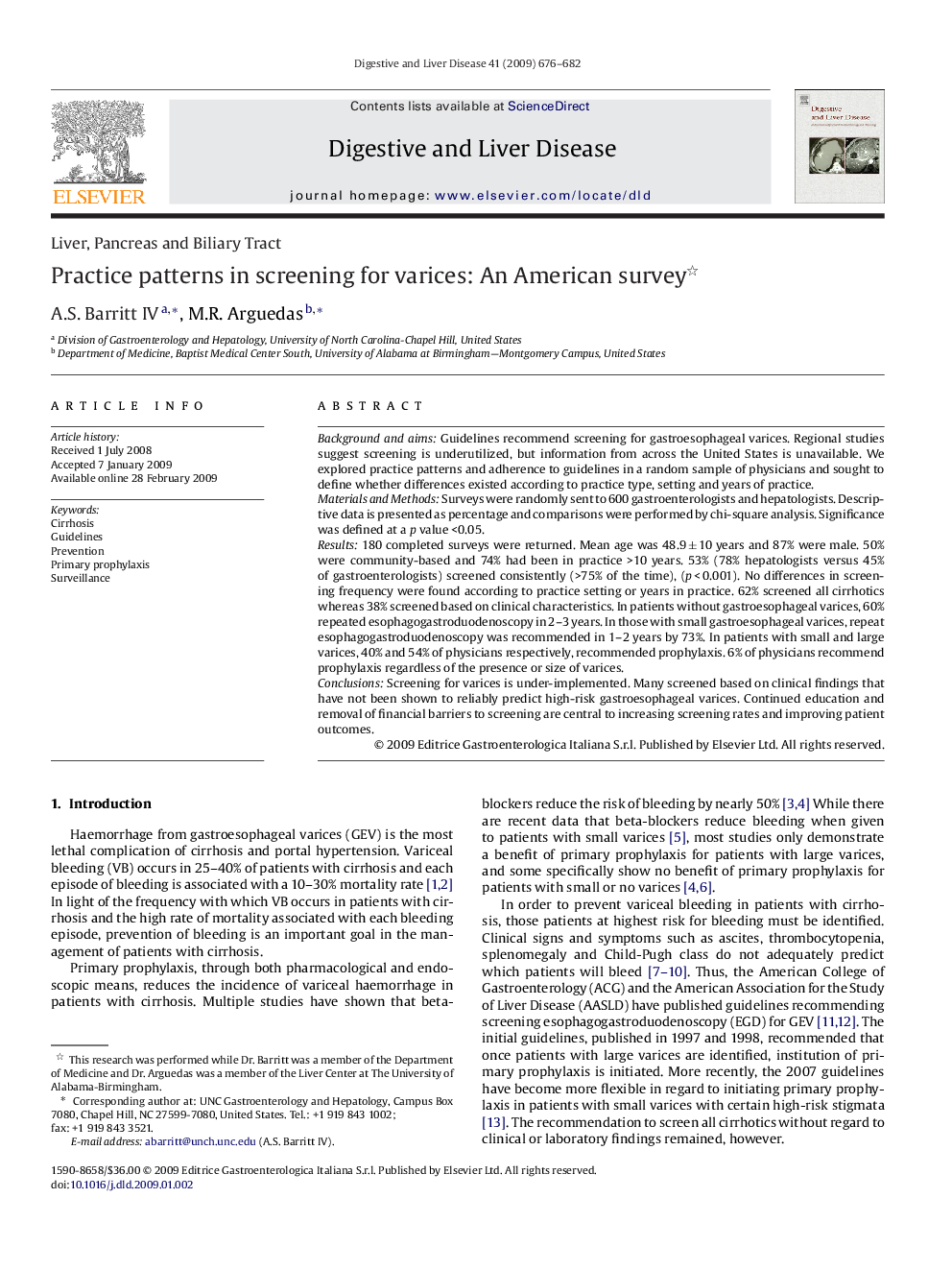| Article ID | Journal | Published Year | Pages | File Type |
|---|---|---|---|---|
| 3264398 | Digestive and Liver Disease | 2009 | 7 Pages |
Background and aimsGuidelines recommend screening for gastroesophageal varices. Regional studies suggest screening is underutilized, but information from across the United States is unavailable. We explored practice patterns and adherence to guidelines in a random sample of physicians and sought to define whether differences existed according to practice type, setting and years of practice.Materials and MethodsSurveys were randomly sent to 600 gastroenterologists and hepatologists. Descriptive data is presented as percentage and comparisons were performed by chi-square analysis. Significance was defined at a p value <0.05.Results180 completed surveys were returned. Mean age was 48.9 ± 10 years and 87% were male. 50% were community-based and 74% had been in practice >10 years. 53% (78% hepatologists versus 45% of gastroenterologists) screened consistently (>75% of the time), (p < 0.001). No differences in screening frequency were found according to practice setting or years in practice. 62% screened all cirrhotics whereas 38% screened based on clinical characteristics. In patients without gastroesophageal varices, 60% repeated esophagogastroduodenoscopy in 2–3 years. In those with small gastroesophageal varices, repeat esophagogastroduodenoscopy was recommended in 1–2 years by 73%. In patients with small and large varices, 40% and 54% of physicians respectively, recommended prophylaxis. 6% of physicians recommend prophylaxis regardless of the presence or size of varices.ConclusionsScreening for varices is under-implemented. Many screened based on clinical findings that have not been shown to reliably predict high-risk gastroesophageal varices. Continued education and removal of financial barriers to screening are central to increasing screening rates and improving patient outcomes.
